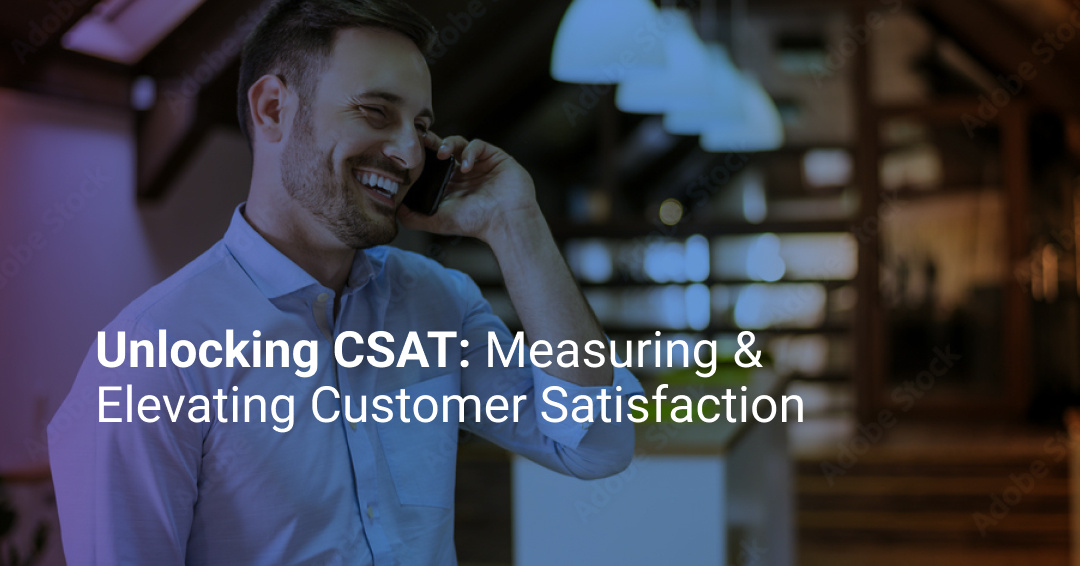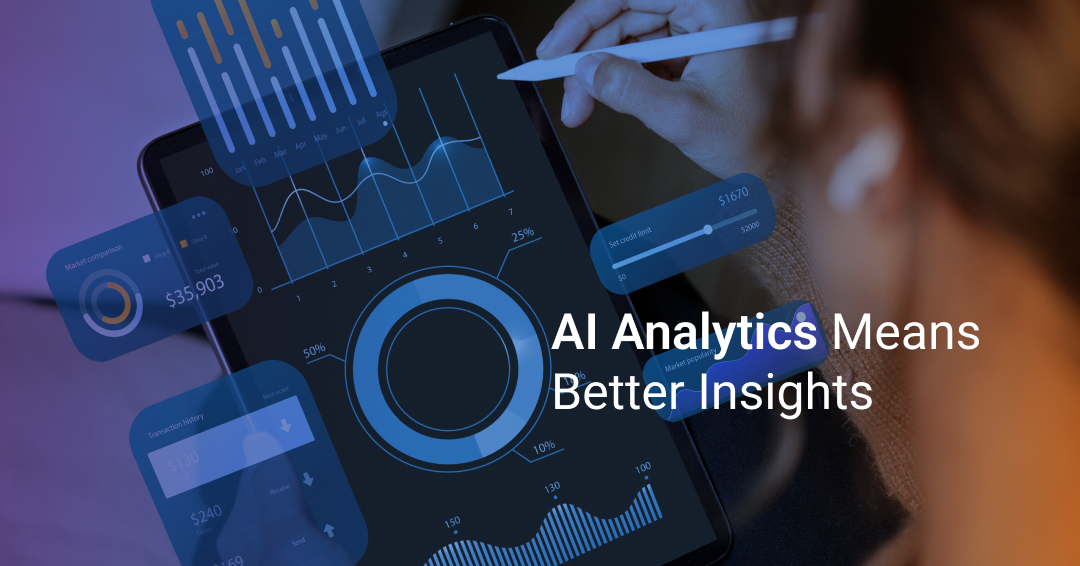12 Call Center Metrics You Should Be Using to Improve CX in 2025
Call center metrics are the most important performance indicators that monitor how effectively your call center is running. This includes anything...
Understanding customer needs and translating them into actionable business decisions and key performance indicators (KPIs) is a significant challenge for most organizations. Often, teams are heavily focused on areas like product features, sales, and marketing, leaving little to no space to improve their understanding of actual customer conversations, given how time-consuming the process can be.
Luckily, with AI analytics, strategists can make sense of customer conversations at scale. As a result, businesses are experiencing a lift across the board.
In this entry, we will discuss ways to contextualize conversations with conversational AI analytics to help organizations meet their objectives more efficiently.
Conversational AI analytics collects and analyzes behavioral patterns reflected across multiple interactions between customers and their conversational AI systems. The main objective is to identify behavioral patterns, improve interactions, and optimize the conversational AI experience to help more customers effectively.
Some leaders may think conversational AI analytics is primarily helpful for CX teams. However, when used across multiple departments, its impact is limitless. For example, conversational AI analytics can help business units identify potential problems or bugs with a particular product or service, given the number of tickets issued. As a result, product teams can prioritize that functionality to ensure it gets solved faster.
Conversational analytics generally work by integrating AI-driven natural language processing (NLP) and machine learning technologies to make sense of conversations across mediums, such as phone calls, chats, and emails.
Setting up the proper metrics is essential for conversational AI platforms to be successful and insightful. Here are a few metrics that organizations can track to meet their goals with conversational AI analytics.
Most contact center managers keep track of two basic metrics: containment and success rate. With conversational AI analytics, these metrics remain relevant, but their combination is ultimately what matters by ensuring customers get accurate answers to their needs.
Generally speaking, understanding the emotional responses of your conversations helps you understand what is going well and what to improve. While this is just one piece of the puzzle, prioritizing negative emotional responses can shed light upon essential matters to prioritize from a business perspective.
Conversational AI is successful, given how accurately it can identify customer intent to provide the best possible answer. Measuring how effectively this occurs is critical to ensure your conversational AI solution works well and is updated to improve permanently.
Conversational AI analytics can help you uncover patterns your business can improve upon. These patterns can range from a particular context or topic that the conversational AI solution seems to get wrong to actual product updates that can help customers have a better experience.
Both metrics are essential to understand how much work is needed to solve a problem and how satisfied people are with the interaction. With conversational AI analytics, you can find unforeseen issues and relationships between these metrics to improve service, support, and product quality.
Having a conversational AI analytical system helps managers understand the escalation rates to human agents to improve potentially confusing terms of queries. That way, new conversational routes can be created to enhance interactions with future customers, increasing containment rates even further by empowering customers to solve their problems independently.
By understanding the types of users that contact your brand, conversational AI tools can provide targeted offers that resonate with their needs. The more accurately these segments are created, especially with large data sets from conversational AI genuine behavioral insights, the more success you can have.
Using end-to-end AI analytics is a frictionless process that can empower your team to think clearly and operate with intention. Below, we will discuss some concrete use cases for any business to consider.
Uncovering insights is one of the most important aspects of running a business. Paradoxically, given the time and effort required, it is also perceived as difficult. With conversational AI analytics, this process can happen automatically with ease, revealing customer preferences, behaviors, and opportunities for better CX.
The more information you have, the better decisions you can make. Think of it like a permanent market research assistant that guides strategy and improves outcomes.
AI analytics can also be an excellent source for anticipating customer needs and proactively engaging. For example, by identifying a potential issue or pattern, the business can communicate with other customers who might have the same problem before it happens.
Using the information provided by conversational AI analytics, you can also identify potential training needs for future performance and service improvements. This iterative and permanent process can help companies improve the quality of their CX.
Analytics can also help sales and marketing teams optimize their campaigns and overall strategies based on honest feedback on customer interactions. The information you can get from conversational AI analytics is not just limited to marketing but can become a foundational source of information for the entire business growth.
Conversational AI analytics also provide an essential window into how your customers perceive your brand in relation to its competitors. You can identify actual features, functions, or details you can leverage to become a preferred choice in future interactions with potential prospects.
Making sense of the context for each interaction is a process that AI analytics can massively improve. Let’s explore some of how AI analytics can improve businesses’ understanding of interactions to improve their operations.
Conversational AI solutions collect the entire journey of every customer, from when the customer dials to when they hang up or end the interaction. With Insights360, you can record, analyze, and make sense of every interaction from dial to disconnect. The more context you have about interactions, the better you can serve your customers.
Advanced conversational AI analytics integrate all mediums to help businesses communicate with customers. Whether it is a chat, email, social media, or a call, the AI analytical capabilities help managers have access to a holistic user profile to improve decision-making.
With conversational AI analytics, you can use multiple segmentation techniques to better understand and contextualize the information you receive. For example, you can cross-reference particular demographics with behavioral patterns to identify growth opportunities.
Simply having access to the actual voice of the consumer and adding a contextual layer on top allows teams to improve services and products more effectively. Instead of going through slow and costly independent research projects, having real-time insights and context is a fantastic way for businesses to jump ahead.
Maintaining the right metrics based on your business priorities (for example, a 70% containment rate) is an excellent practice to keep on the radar when contextualizing conversations with AI analytics. The priority is to impact business objectives, and customer context, and help decision-makers improve their understanding of the business.
AI models require large amounts of information to become more effective. Given that the context and experience of your end customers are constantly evolving, feeding your AI technologies back with this information is vital to improving contextual understanding and performance.
Technological advancements always come with potential challenges that must be addressed immediately. While some platforms, like Mosaicx, provide an end-to-end solution built for enterprises, others are much more limited in scope and scale.
This section discusses some of the most common hurdles when integrating conversational AI analytics and how to solve them.
Natural language processing is a much more complex process to get right than most companies anticipate. Using slang, ambiguous undertones, contextual information, and more makes understanding the intent behind every interaction difficult. To fix this, constantly verify the quality of the analytics and help them improve their understanding of each type of interaction.
An AI machine does not necessarily understand what a legitimate interaction is in comparison to another one that lacks actual value. Feed your AI model interactions with a clear purpose and value to ensure data integrity.
Effective conversational AI analytics requires a high degree of integration with various systems to be truly beneficial. To maximize the potential of conversational AI as a valuable tool, it is essential to use systems that can be easily integrated or to have an internal team of developers who can facilitate this integration. This will improve communication between different systems.
Some users or particular verticals may not be as inclined to have conversations or interactions with an AI solution. To get them used to this new way of interacting with your business, proactively reach out to them with promotions or other types of communications that position you as a more engaging business.
AI analytics can be expensive, primarily if you evaluate ROI for every tool and technology that contributes to your business. To accurately measure impact, think of how a conversational AI solution can reduce the amount of work and operational load in your industry. For instance, with Mosiacx Insights360, you can solve costly issues from network providers, find areas where the current experience could improve, and ultimately save a lot of money.
Highlighting the importance of privacy, especially when using a conversational AI tool, must always be considered. Be sure to communicate to your customers that their information is safe, anonymized, and used for quality purposes, and at the same time, create a cybersecurity framework that encrypts data and guards it against potential cyberattacks.
With Mosaicx’s Insights360 enterprises can easily contextualize conversations to improve decision-making and profits. In a competitive market, having access to genuine customer data while also allowing your team to do more meaningful work can differentiate your brand from the crowd.
Reach out to our team and let us show you how we integrate next-generation virtual agents and white-glove services to help enterprises meet their most ambitious goals.

Call center metrics are the most important performance indicators that monitor how effectively your call center is running. This includes anything...

Businesses across industries have changed or evolved over the decades, but one thing that has remained the same is that their growth is pretty much...

Customers have several major expectations from modern businesses, but none is as challenging as them reading your mind to anticipate support you...
